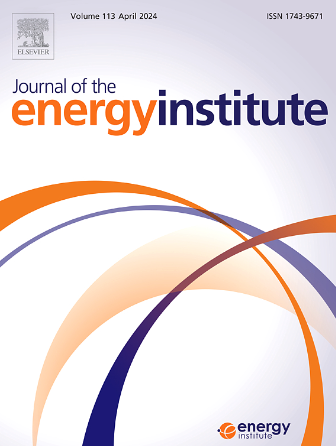Characteristics of high-pressure liquid ammonia sprays and combustion process in ammonia/diesel HPDI dual-fuel engines
IF 5.6
2区 工程技术
Q2 ENERGY & FUELS
引用次数: 0
Abstract
In the context of the “carbon emission peak and carbon neutrality” framework, ammonia has garnered considerable attention as a promising zero-carbon fuel. This study employs backlighting and schlieren optical diagnostics within a constant-volume visualization setup to investigate the effect of environmental temperature on the macroscopic behavior of liquid ammonia sprays. Additionally, it contrasts the spray characteristics of liquid ammonia with those of diesel under extreme thermal and pressure conditions. Through the application of computational fluid dynamics (CFD) simulations, the research elucidates the nuanced differences in microscopic spray dynamics between ammonia and diesel under these conditions. The study also explored how to reduce the negative impact of in-cylinder direct injection of liquid ammonia on combustion through the optimization of the longitudinal distribution of diesel and ammonia sprays in a dual-fuel HPDI engine. The results reveal that liquid ammonia sprays exhibit significant sensitivity to temperature. At higher temperatures, ammonia sprays are approximated to high-density gas injections, with the liquid phase proportion being less than 5 %. Under high-temperature and high-pressure conditions, the liquid phase penetration distance of ammonia is approximately 60 % shorter than that of diesel, which is unfavorable for the flame to propagate upstream of the spray. CFD simulations further indicate that in the HPDI mode, the longitudinal spacing between ammonia and diesel sprays plays a crucial role in the relative positioning of ammonia sprays within the stable ignition zone, thereby influencing the in-cylinder combustion process. Optimizing this spacing can enhance the diesel-induced ignition effect and thus improve the overall combustion performance.
高压液氨喷雾特性及氨/柴油HPDI双燃料发动机燃烧过程
在“碳排放峰值与碳中和”框架下,氨作为一种极具发展前景的零碳燃料备受关注。本研究采用背光和纹影光学诊断在一个恒定体积的可视化设置来研究环境温度对液氨喷雾宏观行为的影响。此外,还对比了在极端热压条件下液氨和柴油的喷雾特性。通过计算流体动力学(CFD)模拟的应用,研究阐明了在这些条件下氨和柴油微观喷雾动力学的细微差异。研究还探讨了如何通过优化双燃料HPDI发动机中柴油和氨喷雾的纵向分布,降低缸内直喷液氨对燃烧的负面影响。结果表明,液氨喷雾剂对温度具有显著的敏感性。在较高的温度下,氨喷雾近似于高密度气体注入,液相比例小于5%。在高温高压条件下,氨的液相穿透距离比柴油短约60%,这不利于火焰向喷雾上游传播。CFD模拟进一步表明,在HPDI模式下,氨喷与柴油喷之间的纵向间距对氨喷在稳定点火区内的相对位置起着至关重要的作用,从而影响缸内燃烧过程。优化该间距可以增强柴油诱导点火效果,从而提高整体燃烧性能。
本文章由计算机程序翻译,如有差异,请以英文原文为准。
求助全文
约1分钟内获得全文
求助全文
来源期刊

Journal of The Energy Institute
工程技术-能源与燃料
CiteScore
10.60
自引率
5.30%
发文量
166
审稿时长
16 days
期刊介绍:
The Journal of the Energy Institute provides peer reviewed coverage of original high quality research on energy, engineering and technology.The coverage is broad and the main areas of interest include:
Combustion engineering and associated technologies; process heating; power generation; engines and propulsion; emissions and environmental pollution control; clean coal technologies; carbon abatement technologies
Emissions and environmental pollution control; safety and hazards;
Clean coal technologies; carbon abatement technologies, including carbon capture and storage, CCS;
Petroleum engineering and fuel quality, including storage and transport
Alternative energy sources; biomass utilisation and biomass conversion technologies; energy from waste, incineration and recycling
Energy conversion, energy recovery and energy efficiency; space heating, fuel cells, heat pumps and cooling systems
Energy storage
The journal''s coverage reflects changes in energy technology that result from the transition to more efficient energy production and end use together with reduced carbon emission.
 求助内容:
求助内容: 应助结果提醒方式:
应助结果提醒方式:


